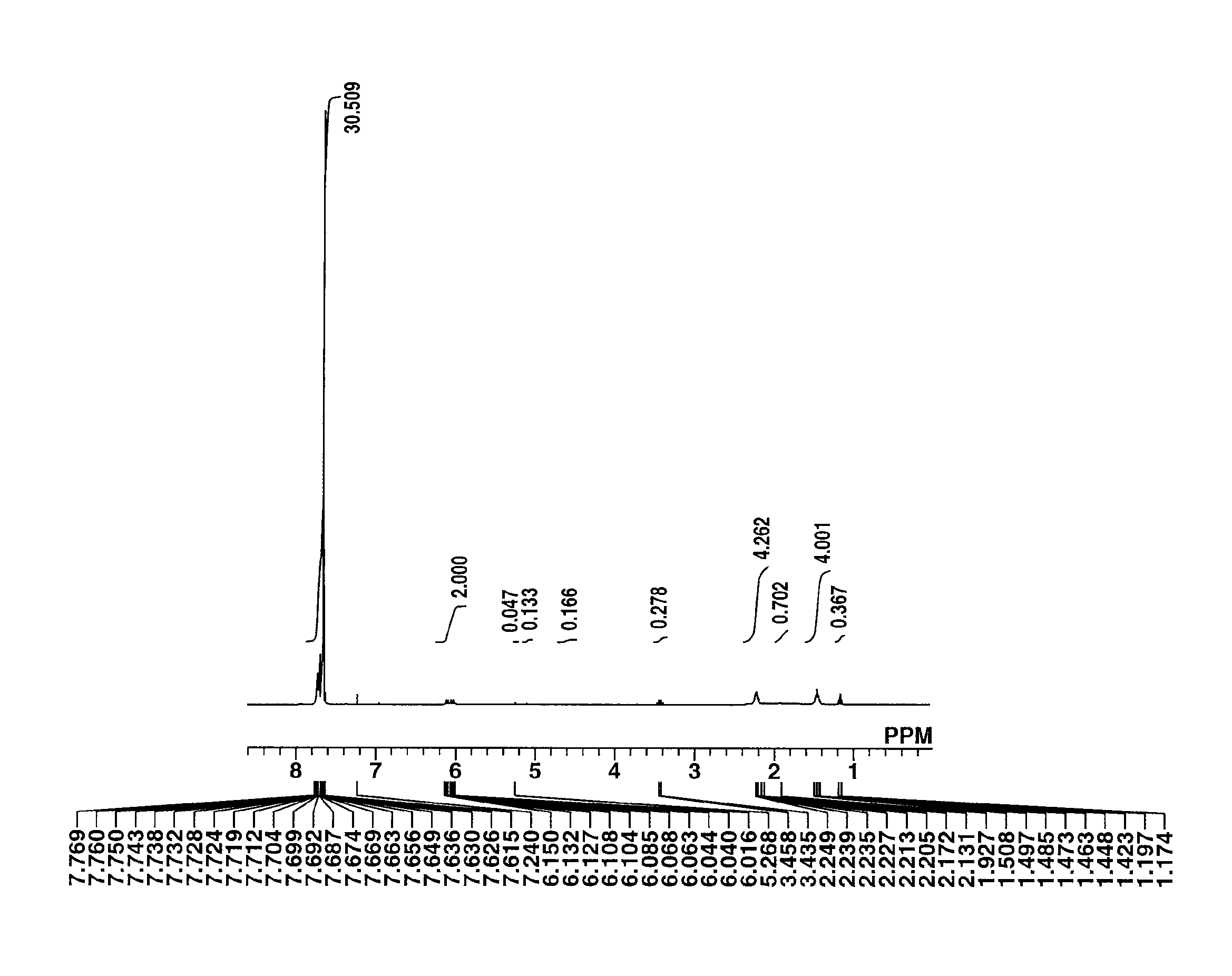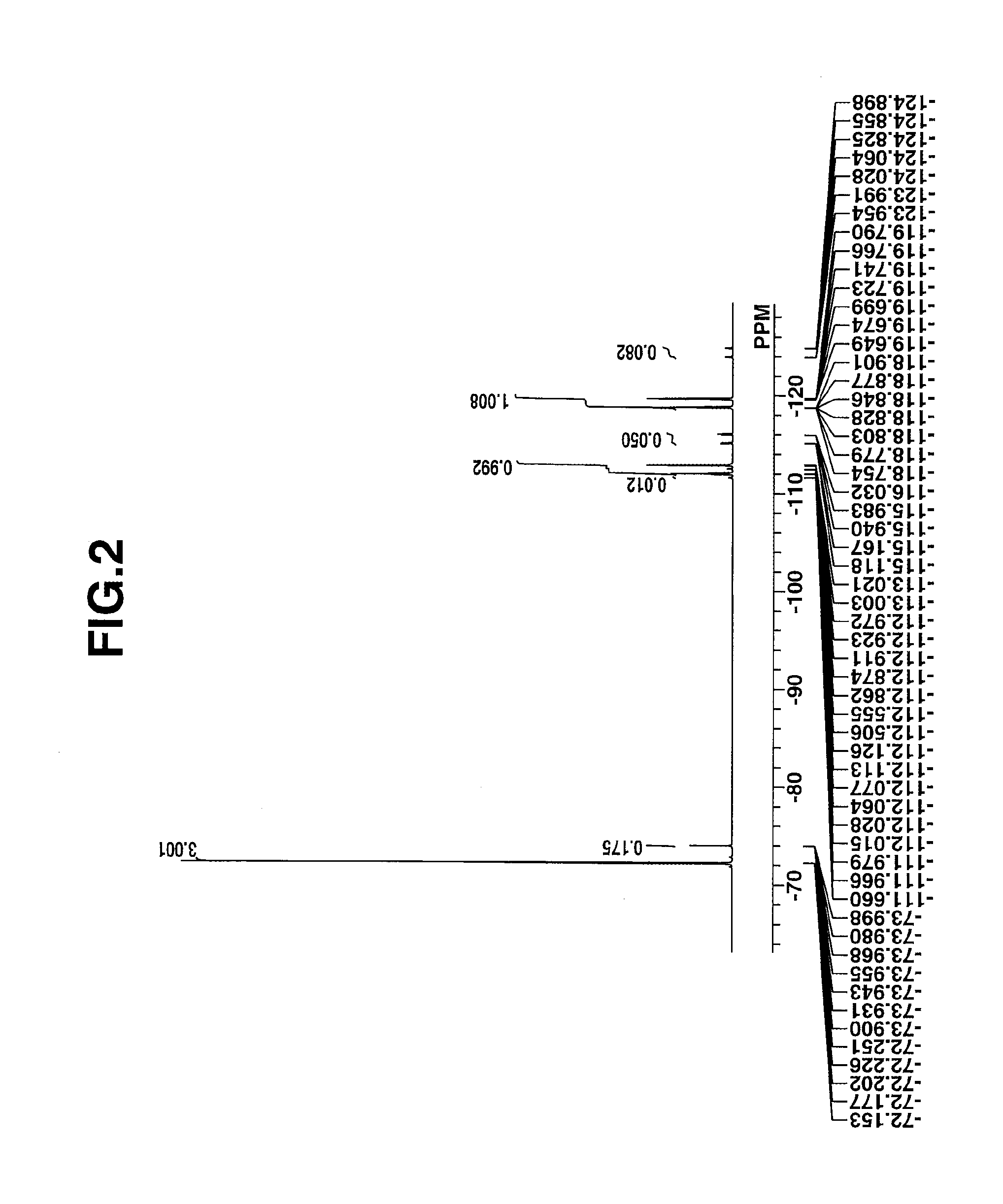Photoacid generator, chemically amplified resist composition, and patterning process
a chemical amplification and resist technology, applied in the field of photoacid generators, can solve the problems of not meeting the requirements of resist compositions using prior art pags, and achieve the effects of reducing the number of defects, and reducing the number of resist compositions
- Summary
- Abstract
- Description
- Claims
- Application Information
AI Technical Summary
Benefits of technology
Problems solved by technology
Method used
Image
Examples
synthesis example 1
Synthesis of Photoacid Generator
[0193]Photoacid generators within the scope of the invention were synthesized according to the following formulation.
synthesis example 1-1
Synthesis of PAG-1
[0194]
[0195]Under ice cooling, 0.8 g of adipic acid chloride was added dropwise to a mixture of 4.9 g of triphenylsulfonium 1,1,3,3,3-pentafluoro-2-hydroxypropane-1-sulfonate, synthesized according to the method of JP-A 2007-145804, 1.0 g of triethylamine, 0.2 g of N,N′-dimethyl-4-aminopyridine, and 20 g of methylene chloride. The contents were stirred at room temperature for 1 hour, after which dilute hydrochloric acid was added to quench the reaction. The organic layer was taken out, washed with water, and concentrated under reduced pressure by distilling off methylene chloride. Methyl isobutyl ketone was added to the concentrate, which was concentrated under reduced pressure again. Diethyl ether was added to the concentrate, from which the supernatant was removed, obtaining 3.8 g of the target compound (yield 77%).
[0196]The target compound was analyzed by spectroscopy. The data of time-of-flight mass spectrometry (TOFMS) are shown below. The NMR spectra, 1H-NMR ...
synthesis example 1-2
Synthesis of PAG-2
[0199]
[0200]Under ice cooling, a mixture of 0.9 g of terephthalic acid chloride and 5 g of methylene chloride was added dropwise to a mixture of 4.9 g of triphenylsulfonium 1,1,3,3,3-pentafluoro-2-hydroxypropane-1-sulfonate, synthesized according to the method of JP-A 2007-145804, 1.0 g of triethylamine, 0.2 g of N,N′-dimethyl-4-aminopyridine, and 20 g of methylene chloride. The contents were stirred at room temperature for 1 hour, after which dilute hydrochloric acid was added to quench the reaction. The organic layer was taken out, washed with water, and concentrated under reduced pressure by distilling off methylene chloride. Methyl isobutyl ketone was added to the concentrate, which was concentrated under reduced pressure again. Diethyl ether was added to the concentrate, from which the supernatant was removed, obtaining 4.4 g of the target compound (yield 87%).
[0201]The target compound was analyzed by spectroscopy. The data of infrared (IR) absorption spectros...
PUM
| Property | Measurement | Unit |
|---|---|---|
| refractive index | aaaaa | aaaaa |
| wavelength | aaaaa | aaaaa |
| feature size | aaaaa | aaaaa |
Abstract
Description
Claims
Application Information
 Login to View More
Login to View More - R&D
- Intellectual Property
- Life Sciences
- Materials
- Tech Scout
- Unparalleled Data Quality
- Higher Quality Content
- 60% Fewer Hallucinations
Browse by: Latest US Patents, China's latest patents, Technical Efficacy Thesaurus, Application Domain, Technology Topic, Popular Technical Reports.
© 2025 PatSnap. All rights reserved.Legal|Privacy policy|Modern Slavery Act Transparency Statement|Sitemap|About US| Contact US: help@patsnap.com



